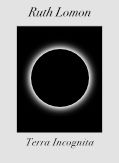Orchestral
Bohun, Lyle de
Motive and Chorale for Chamber Orchestra
Text of the chorale may be sung by unison chorus, or played only by the orchestra if desired.
The composer writes: “Harriet Morgan Tyng, founder of Williard Day School in Troy, New York, taught music and French there in the middle fifties, and was an inspiration to me. Although we never met, her educational concepts deeply impressed me, and her dedicated life was the major stimulus for the creation of the piece.”

Lomon, Ruth
Terra Incognita
“Engaging and thought provoking” (Liane Curtis, IAWM Journal)
Terra Incognita for orchestra (1993) is rhythmic and characterized by forceful and abrupt gestures and a sense of menace. There is a rich tapestry of sound featuring quarter tones and extreme registers. Also featured are chance elements that appear early in the work and resurface periodically. Lomon creates the sense of exploring new worlds–as the title suggests–through dissonances, sudden gestures and musical fragments that remain undeveloped. This intense piece rushes to the close, only to slow and swell at the ending.
Munn, Zae
Symphony of the Alcoves
In three short movements. Completed in October of 2002.
The composer writes: “The title draws on the image of an alcoveÇ a small, recessed extension of a room, often with an arched opening. Each movement might be seen as a room in a house. The outer ‘rooms’ have alcoves (three in the first, two in the third), with each alcove having both its own identity and its own intimate relation to the main room. A secret passageway of sorts recurs in each of the three rooms and serves to connect them.
The second room is the smallest of the three, too small for its own alcoves, and almost an alcove itself within the whole piece. It is unified by the continuous alternation of 3/8 and 7/1 meters, but with two distinct sections, rounded out by a short return to the first section.”



